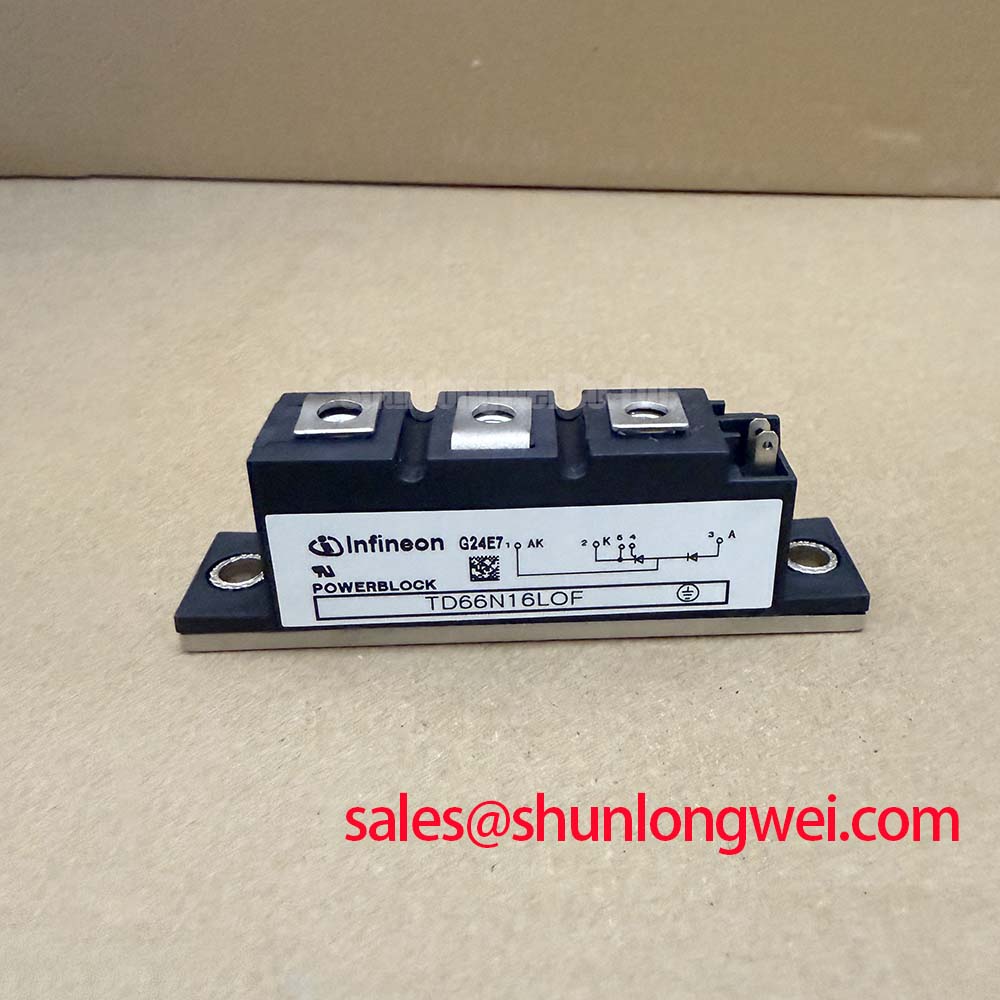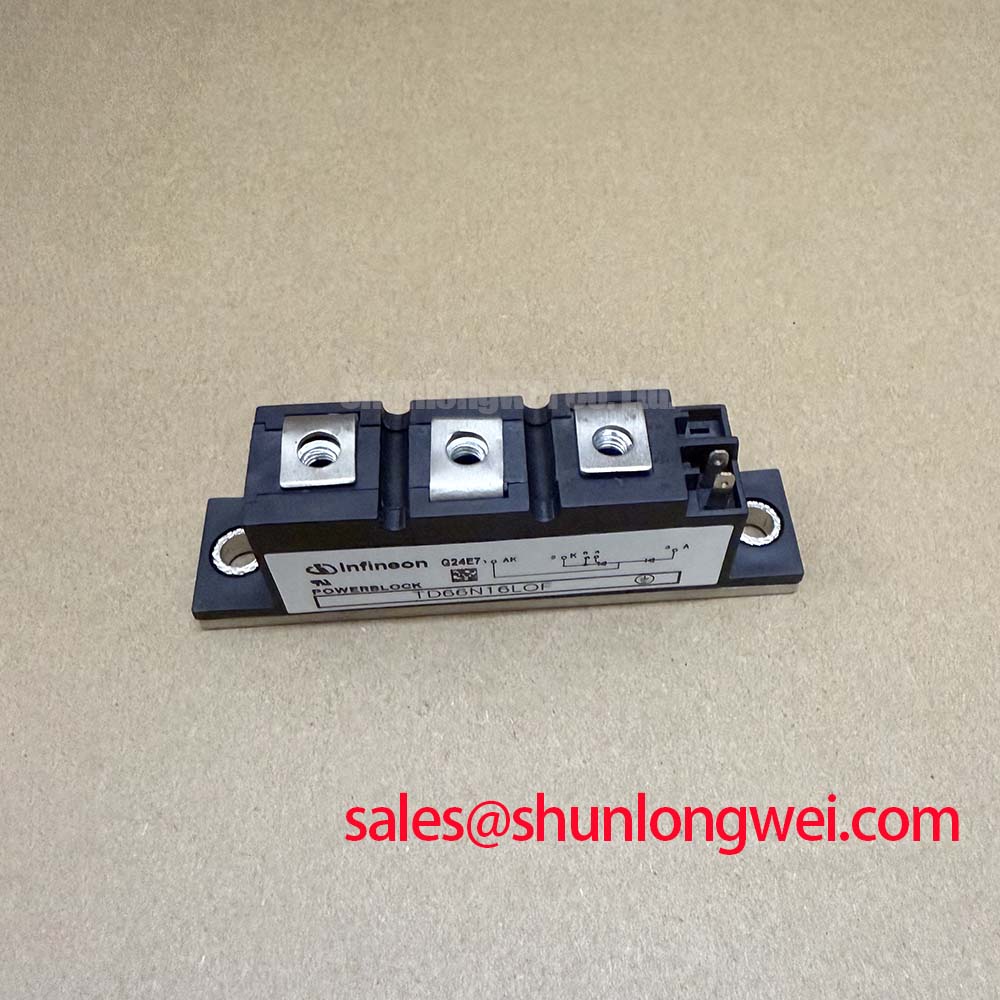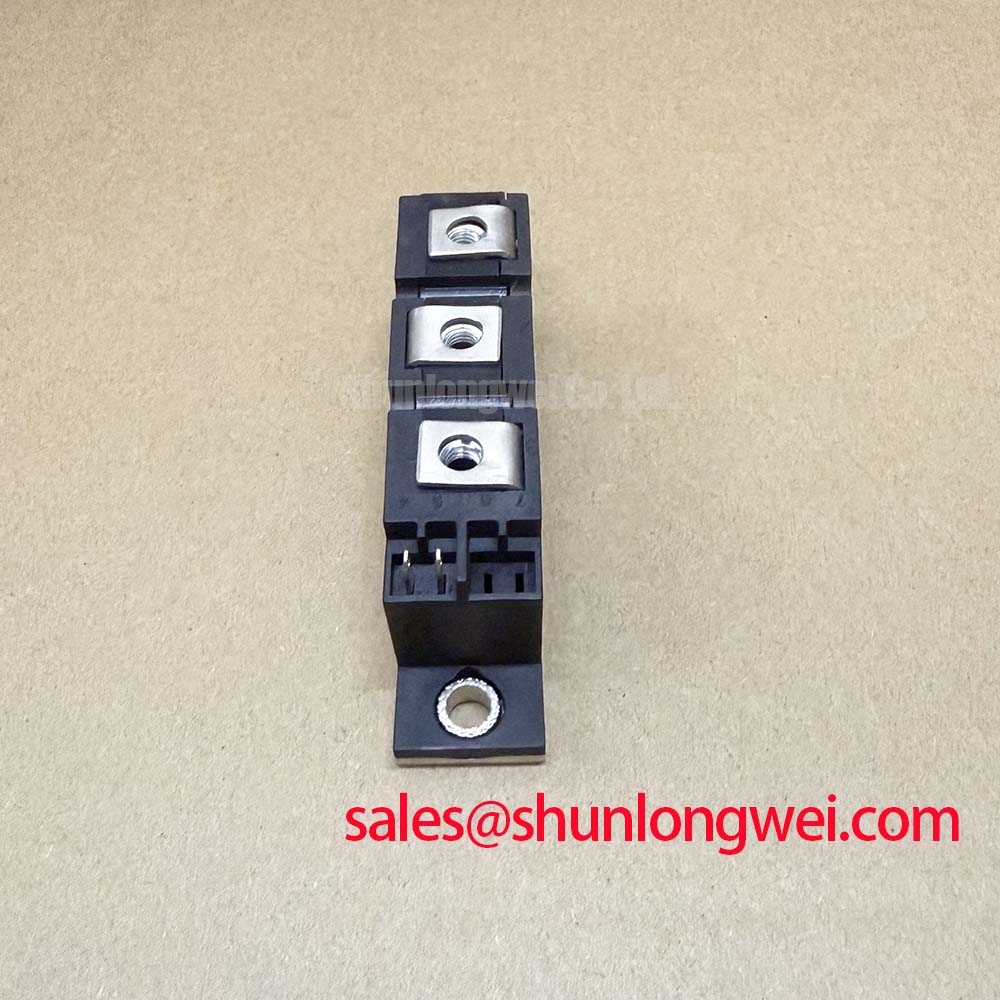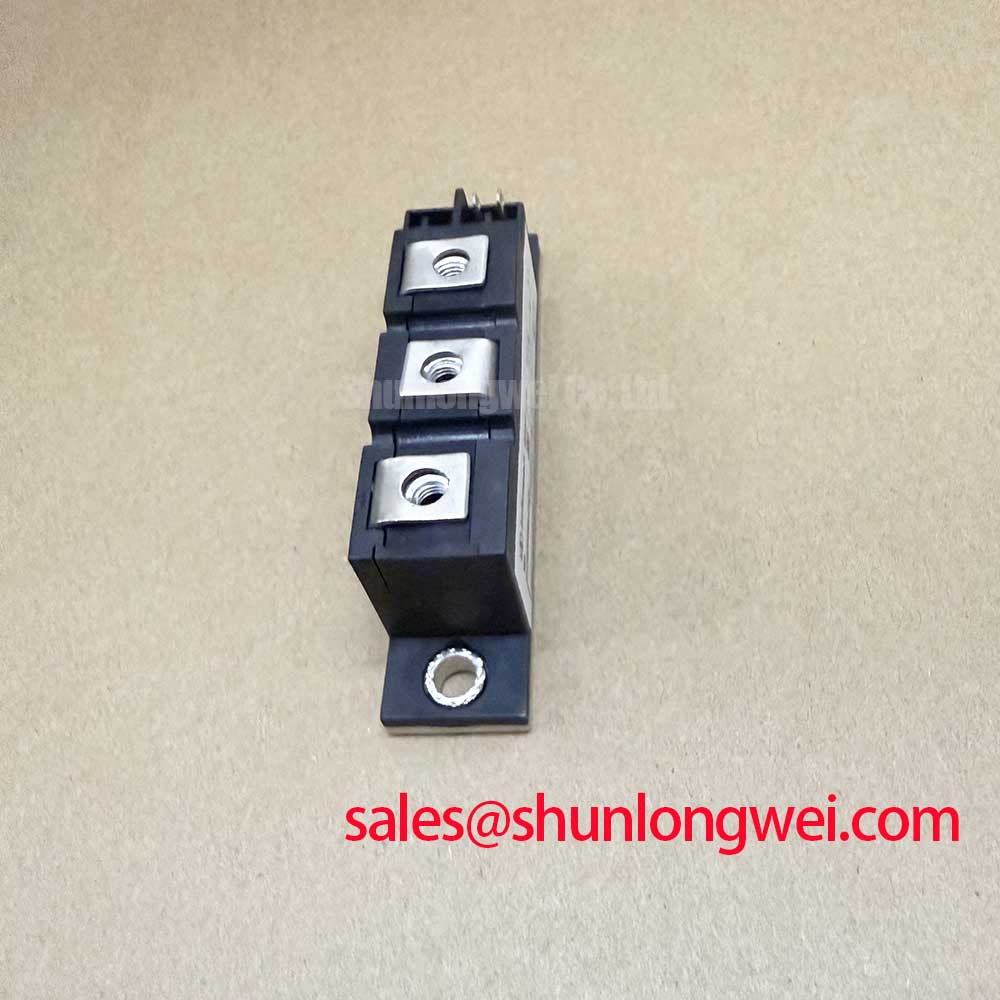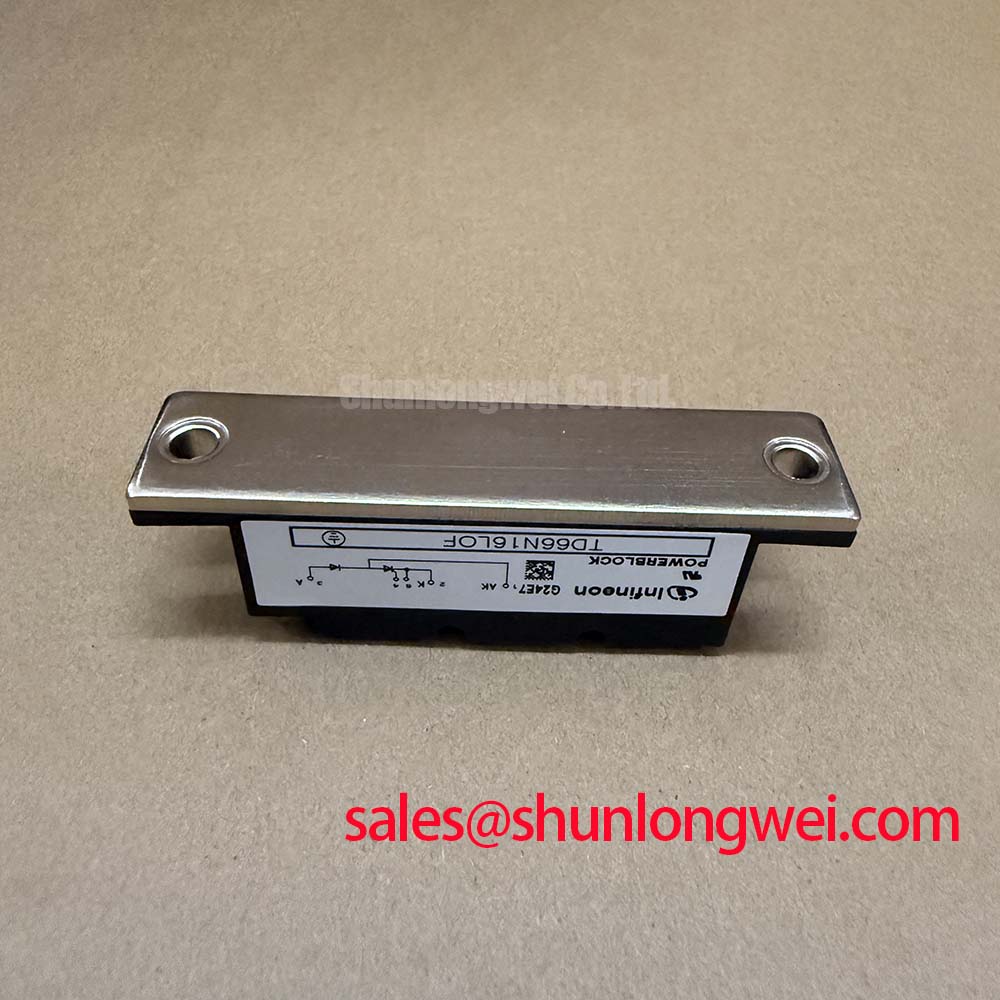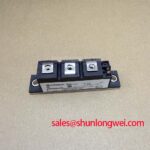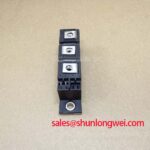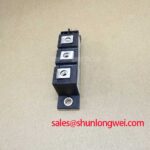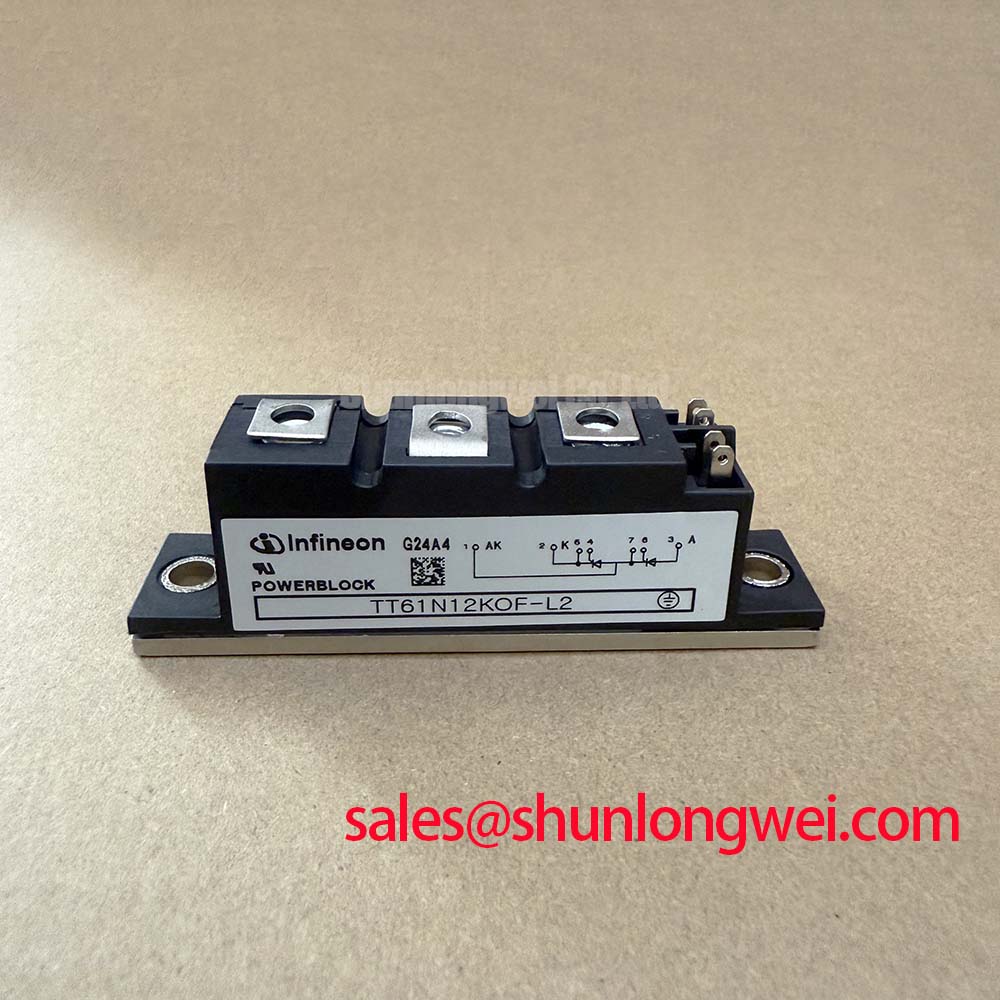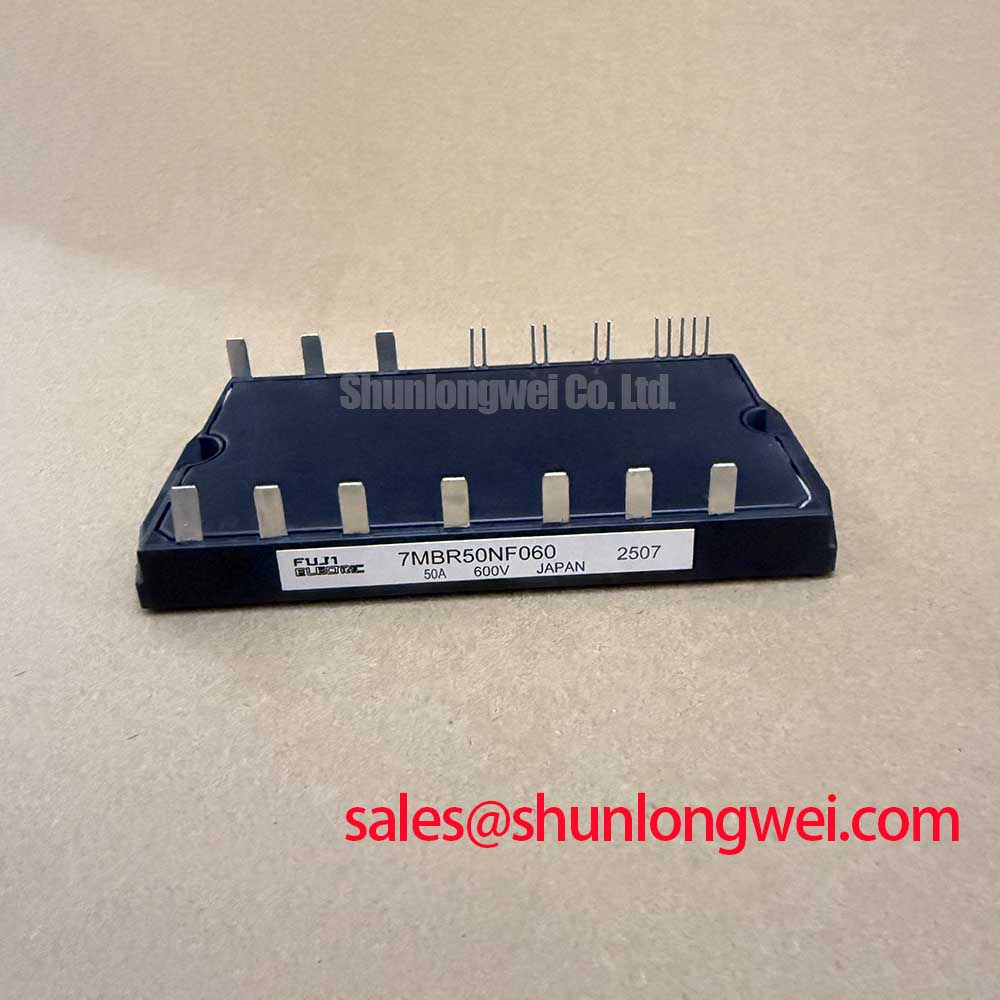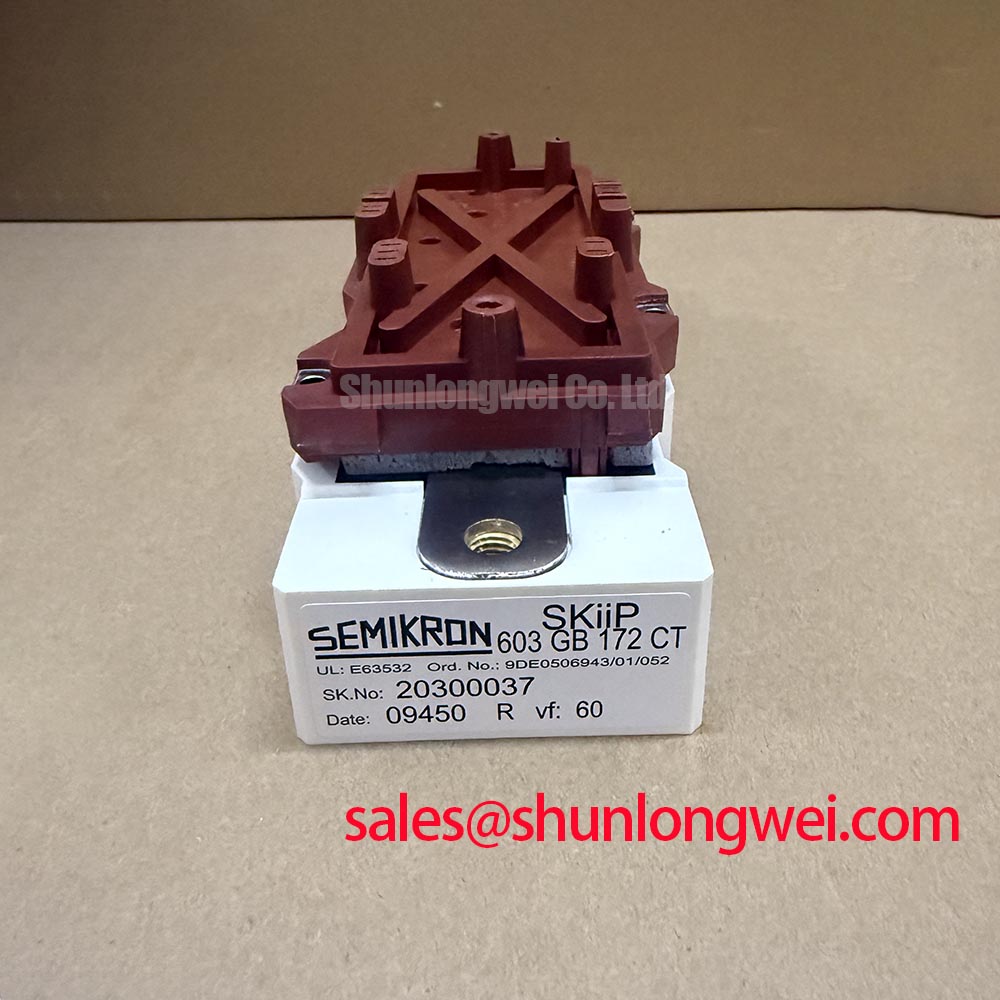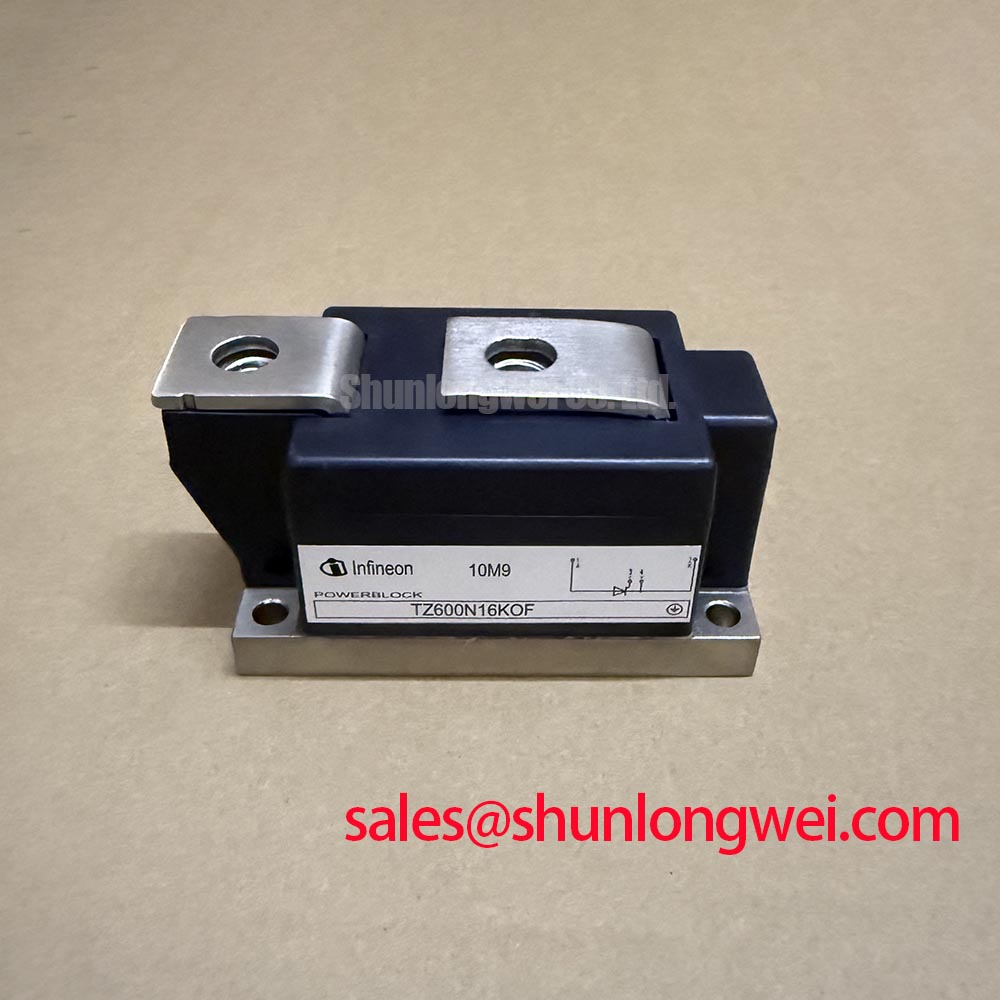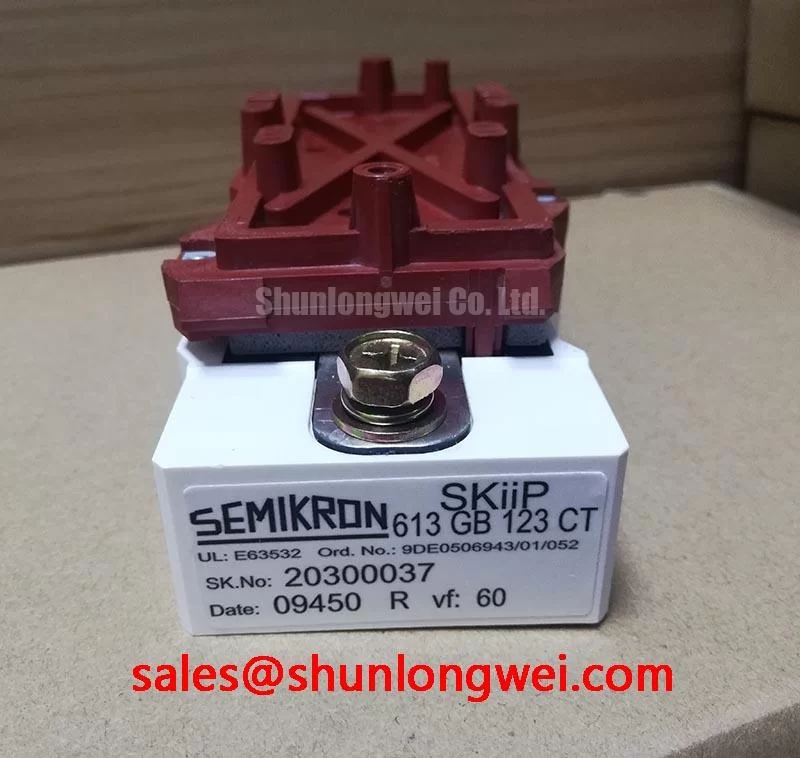TD66N16LOF Thyristor/Diode Module: Reliability by Design
Engineered for sustained operational integrity, the Infineon TD66N16LOF Thyristor/Diode Module leverages a pressure-contact system to deliver exceptional long-term reliability in high-stress power conversion systems. At its core, this component provides a robust foundation for demanding industrial applications. How can system designers mitigate the primary cause of premature failure in high-power modules? The TD66N16LOF directly addresses this by using pressure-contact technology, which eradicates solder fatigue—a common failure point in conventional modules subjected to thermal cycling. This design choice fundamentally enhances the device's operational lifespan.
Top Specs: 1600V (VRRM) | 120A (IFAVM) | 1.83 K/kW (RthJC)
Key Benefits:
- Superior thermal cycling endurance.
- Eliminates solder-related failure modes.
Data-Driven Evaluation: TD66N16LOF Design Principles
When evaluating power modules, a direct comparison of datasheet values provides a clear picture of a component's suitability for a specific engineering challenge. The TD66N16LOF's design philosophy centers on mechanical and thermal robustness, which becomes evident when its attributes are viewed in context.
Consider a standard solder-based module versus the TD66N16LOF. While initial electrical characteristics might appear similar, the critical difference lies in the power cycling capability. Solder joints expand and contract at different rates than the surrounding silicon and ceramic, leading to micro-cracks and eventual failure. The pressure-contact design of the TD66N16LOF bypasses this mechanism entirely, providing a consistent and durable electrical and thermal interface over hundreds of thousands of cycles. For applications requiring high availability, such as grid-tied rectifiers or industrial motor drives, this distinction is a primary factor in calculating the total cost of ownership.
Strategic Implications of Solder-Free Design in Power Systems
The move toward more resilient power electronics is a direct response to the increasing demands of Industry 4.0 and renewable energy infrastructure. In these sectors, unscheduled downtime translates into significant financial and operational losses. The adoption of components with inherently robust designs, such as the Infineon TD66N16LOF, is a strategic advantage. Its pressure-contact technology aligns with a macro-trend of designing for longevity and reducing maintenance cycles. This approach not only improves the reliability of an individual system but also enhances the stability and predictability of the larger electrical grid or manufacturing process it supports. For a deeper understanding of how module construction impacts system life, exploring the principles of thermal performance is essential.
Inside the TD66N16LOF: A Focus on Pressure-Contact Mechanics
The defining technological feature of the TD66N16LOF is its use of pressure-contact technology. Unlike conventional modules where semiconductor chips are soldered to a direct bonded copper (DBC) substrate, this design applies a precise, uniform mechanical force to maintain the connection. This eliminates the solder layer, which is often the weakest link in the thermal and mechanical chain.
Advantages of this Approach:
- Enhanced Thermal Cycling Life: By removing solder, the module circumvents the primary mechanism of fatigue failure caused by mismatched coefficients of thermal expansion. This results in a significantly longer operational life in applications with frequent temperature fluctuations.
- Predictable Performance: The absence of solder degradation ensures that thermal resistance remains stable over the module's lifetime, leading to more predictable and reliable system performance.
- Improved Durability: The robust mechanical construction is inherently more resistant to shock and vibration, making it a suitable choice for deployment in harsh industrial environments. What is the key to its long-term reliability? The elimination of solder fatigue through its pressure-contact design.
Core Specifications for System Integration
A successful design relies on a thorough understanding of a component's key parameters. The following table highlights the specifications of the TD66N16LOF that are most critical for system-level integration and performance modeling, providing not just the value but also its direct engineering significance.
| Parameter | Value | Engineering Significance |
|---|---|---|
| Repetitive Peak Reverse Voltage (VRRM) | 1600 V | Provides a substantial safety margin for operation on 400V, 480V, and even 690V AC lines, ensuring resilience against voltage transients. |
| Average Forward Current (IFAVM) | 120 A (at TC = 100°C) | Defines the module's continuous current handling capability at a specified case temperature, a primary factor for sizing in rectifier applications. |
| Thermal Resistance, Junction to Case (RthJC) | 1.83 K/kW (per Diode) | This parameter is analogous to a bottleneck in traffic; a lower value indicates more efficient heat transfer from the active silicon to the heatsink. It is a critical input for thermal management design to prevent overheating. For a comprehensive view on component failures, see this guide on IGBT failure analysis. |
| Isolation Voltage (VISOL) | 3000 V (RMS, 50 Hz, 1 min) | Guarantees high electrical isolation between the active terminals and the mounting baseplate, simplifying system assembly and enhancing safety compliance. |
Where Reliability is Paramount: TD66N16LOF Use Cases
The specific characteristics of the TD66N16LOF make it an excellent fit for applications where operational uptime and long service life are non-negotiable. Its robust design is particularly valuable in uncontrolled or demanding environments.
Primary Applications Include:
- Industrial Motor Drives: Serves as the front-end rectifier in Variable Frequency Drives (VFDs) and DC motor controls, where it must withstand continuous load cycling and industrial environments.
- Power Supplies: Used in high-power industrial rectifiers and Uninterruptible Power Supplies (UPS), where its reliability ensures continuity of critical power.
- Welding Equipment: The module's ability to handle high currents and thermal stress makes it suitable for power sources in industrial welding applications. For high-voltage systems with a similar focus on reliability, the TDB6HK95N16LOF provides a complete three-phase bridge configuration.
For industrial drives where long-term reliability under cyclic loading is the primary design driver, the TD66N16LOF's pressure-contact technology makes it a superior choice over conventional soldered modules.
Engineering in Practice: Thermal Performance Validation
In a typical soft-starter application for a 100 kW motor, a set of TD66N16LOF modules were deployed to manage the ramp-up current. During the startup phase, the modules experience significant thermal stress. Field data collected over a 24-month period showed a negligible change in the case-to-heatsink thermal interface resistance, validating the stability of the pressure-contact mounting system. This contrasts with similar systems using soldered modules, which often require periodic re-torquing or show signs of thermal paste degradation due to micro-movements at the solder interface. The test confirmed the TD66N16LOF's suitability for applications involving repetitive, high-stress operational cycles.
A Designer's Perspective on Future-Proofing
When selecting a power rectifier, it is constructive to think beyond immediate electrical requirements and consider the component's role in the system's long-term value proposition. The Infineon TD66N16LOF encourages a shift in design philosophy from merely meeting specs to architecting for endurance. As power systems become more distributed and less accessible for frequent maintenance, specifying components that actively eliminate known failure mechanisms, like solder fatigue, becomes a critical aspect of future-proofing a design. The engineering choice here is not just about a 1600V, 120A rectifier; it's about investing in a foundational component that underpins the reliability of the entire asset for its intended service life.

